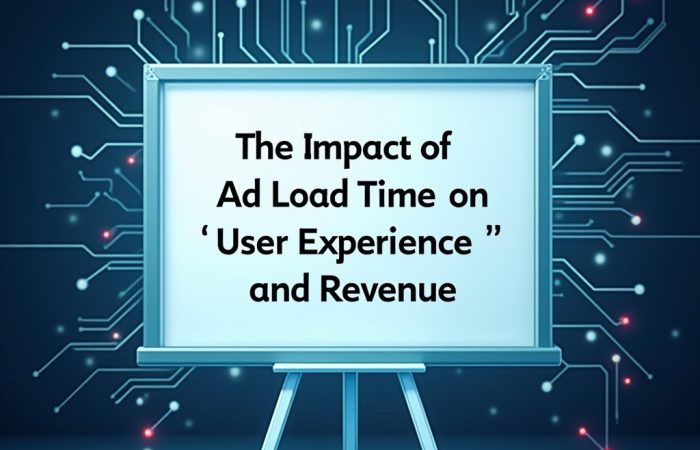Ad load time has become a critical metric in the digital landscape, influencing both user experience and revenue generation for online businesses. As users increasingly expect fast, seamless browsing experiences, the implications of slow-loading advertisements can be dire. According to a study conducted by Google, 53% of mobile users abandon sites that take longer than three seconds to load, illustrating the importance of optimizing ad performance.
The Psychological Impact of Slow Ads
When users encounter slow-loading ads, their overall experience is adversely affected. A delayed ad can lead to frustration, diminishing users’ willingness to engage with the content. According to a report by Akamai, a mere two-second delay in load time can increase bounce rates by 103%. This statistic highlights that even slight delays can significantly impact user retention.
- Example: In 2017, Amazon reported that every 100 milliseconds of latency cost them 1% in sales. This relationship between speed and revenue underscores the importance of optimizing ad load times to enhance user satisfaction and engagement.
The Revenue Implications of Ad Load Time
1. Ad Performance Metrics
The performance of digital ads is closely tied to their load times. Advertisements that load quickly are more likely to be viewed and clicked, resulting in higher click-through rates (CTRs). According to a study by DoubleClick, the probability of a mobile site losing visitors increases by 90% if the load time exceeds five seconds.
- Statistical Insight: A recent report by the Interactive Advertising Bureau (IAB) highlighted that fast-loading ads can improve ROI by up to 20%. This statistic emphasizes the correlation between ad load times and revenue generation.
2. The Impact on Programmatic Advertising
In the realm of programmatic advertising, where speed and efficiency are paramount, ad load time can significantly influence the success of campaigns. Slow-loading ads can lead to missed impressions and reduced fill rates, which ultimately affects advertisers’ overall spending.
- Example: A case study by a leading ad tech company revealed that optimizing ad load times from an average of 4 seconds to under 2 seconds resulted in a 25% increase in impressions and a 15% increase in CPM (cost per thousand impressions) rates. This illustrates the direct impact of load times on revenue generation in programmatic advertising.
Different Perspectives on Ad Load Times
Publishers often face a challenging balance between ad monetization and user experience. While high ad load times can deter users, inadequate ad placements can lead to lost revenue. Many publishers struggle to find the right equilibrium, with some prioritizing ad revenue over user experience.
- Survey Insight: A survey conducted by the Digital Marketing Association found that 74% of publishers believe that ad load time directly affects user engagement. However, 60% also stated that they felt pressured to prioritize ad revenue over user experience. This conflicting perspective highlights the need for a strategic approach to ad load optimization.
Strategies for Optimizing Ad Load Times
To mitigate the negative impacts of ad load times, businesses can adopt several best practices:
- Lazy Loading: Implementing lazy loading techniques allows ads to load only when they are in the viewport. This reduces initial load times and enhances user experience.
- Ad Size Optimization: Compressing and optimizing ad sizes can significantly reduce load times. Utilizing formats like AMP (Accelerated Mobile Pages) can also contribute to faster loading experiences.
- Content Delivery Networks (CDNs): Utilizing CDNs can distribute ad assets across various servers, reducing latency and improving load times.
- A/B Testing: Conducting A/B tests on different ad formats and placements can help identify the fastest options that still generate revenue.
The Future of Ad Load Times
As technology continues to evolve, so will the strategies for optimizing ad load times. Innovations like artificial intelligence and machine learning can play a significant role in predicting user behavior and optimizing ad delivery.
- Example: A recent study by eMarketer highlighted that AI-driven ad optimization led to a 30% increase in ad performance metrics, including load times. This technology can help advertisers and publishers dynamically adjust ad strategies based on real-time data.
Conclusion
Focusing on ad load time is no longer a luxury but a necessity for businesses seeking to enhance user experience and maximize revenue. By understanding the psychological impact of slow ads, analyzing revenue implications, and implementing best practices, organizations can effectively navigate the challenges posed by ad load times. The future of digital advertising will undoubtedly hinge on the ability to deliver fast, engaging ad experiences that resonate with users while driving substantial revenue growth.








No Comment! Be the first one.